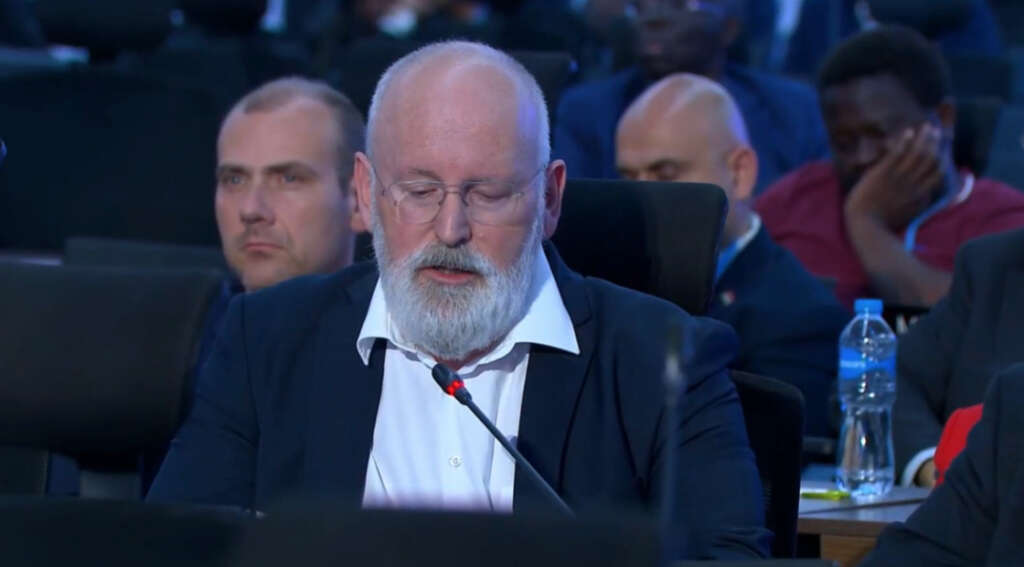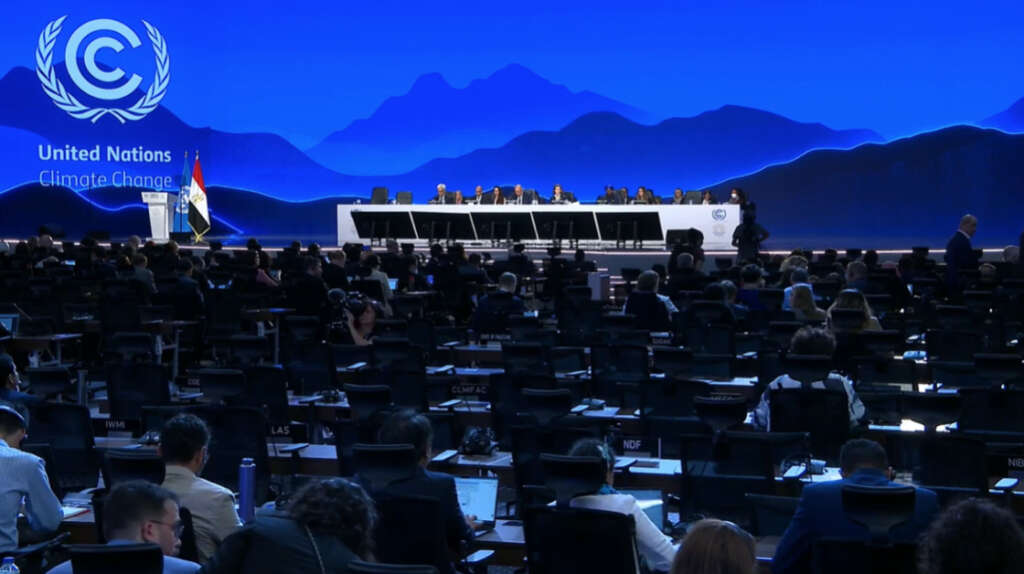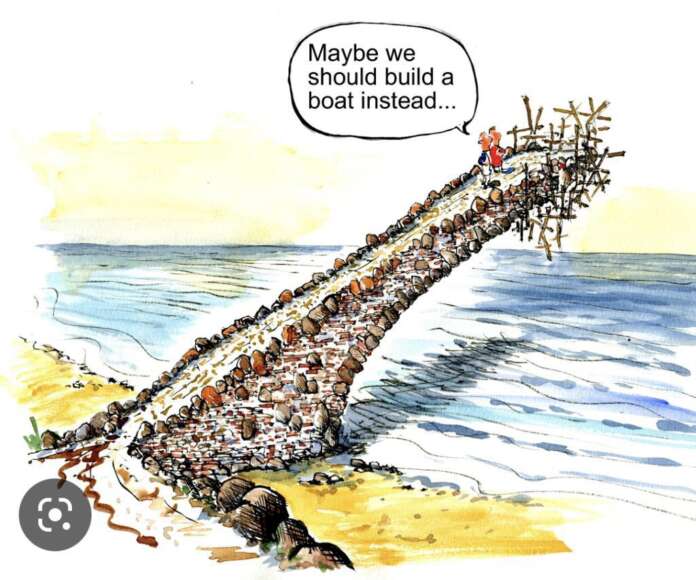Alas, after COP25 in Madrid, we have finally managed to close the second-longest COP in Sharm el-Sheikh. As usual, COPs are one or two days longer than expected. From the 6th to the 20th (not the 18th) of November 2022, 35,000 delegates from 190 countries attended the most critical conference of our time set against a difficult geopolitical backdrop and climate crisis of biblical proportions at the feet of Mount Sinai, a site central to many faiths. All Parties were waiting for a miracle from this mountaintop as we are already living in a world of 1.2 degrees change and it is already becoming unlivable for many. Amongst the multiple and interrelated crises that grip our world, exacerbating the suffering of the poor, marginalised and vulnerable, we were supposed to emerge from COP27 with a package of outcomes that keeps 1.5°C alive and protects the world’s vulnerable. The world deserves higher ambition to avoid repeated climate-related catastrophes. If we fail to reduce emissions, the cost of adaptation rises; if we fail to adapt, loss and damage occur.
Did this COP meet our task to hold fast to our commitment to 1.5°C? Did the results of COP27 build on the conclusions and ambitions from last year in Glasgow or backslide on it? Did this COP rebuild the broken trust between the global North and South? Did COP27 reach a breakthrough agreement along both of the two overriding themes: justice and ambition with a new “loss and damage” fund to operationalise in the coming period for vulnerable countries, or only along justice? Have we fallen short in actions to avoid and minimise loss and damage by not being ambitious enough? Did we do enough to limit climate change or do we still wait and respond when it comes? Anyway, why is ambition also crucial for climate justice for all?
Although the cost of inaction is so much higher than the cost of action, unfortunately, in the last hours talks have stalled. We have lost a lot of speed since Glasgow. In his final statement António Guterres, the Secretary-General of the United Nations (UNSG) said that COP27 concluded with much homework and little time. The most vital energy source to finish our homework in the world is people power: “we need to drastically reduce emissions now – and this is an issue this COP did not address. A fund for loss and damage is essential – but it’s not an answer if the climate crisis washes a small island state off the map – or turns an entire African country into a desert. The world still needs a giant leap in climate ambition. The red line we must not cross is the line that takes our planet over the 1.5-degree temperature limit. To have any hope of keeping to 1.5, we need to massively invest in renewables and end our addiction to fossil fuels.”

Indeed, at the last minute, we managed to build a very slim bridge over troubled waters. Nevertheless, we have bridged a divide at this COP that has lasted thirty years. Saturday morning of the prolonged COP27 started with the European Union (EU) setting the stage for the final fight on the language of COP27 conclusions by saying that we should rather have no decision than a bad decision. To have a good decision the EU was extremely flexible by offering language on a fund for loss and damage that is targeted to the most vulnerable. The EU wanted a fund based on analysis of the world of today: this means growing and broadening its donor base from the major industrialising developing countries as well to get money in. It means increasing solidarity and bridging the gap between those in need and those in a position to contribute to addressing their needs on the basis of their today’s potential and not on the potential of 1992. At the same time, the world community has to wake up and realise that if we do not do enough on reducing emissions, we can’t keep 1.5 alive and there is no amount of money on this planet that will be able to address the misery which is already occurring and will occur from natural disasters.
The cover decision of COP27 entitled “Sharm el-Sheikh Implementation Plan” addressed many themes starting from science and urgency, enhancing ambition and implementation, to energy, mitigation, adaptation, loss and damage, early warning and systematic observation, implementation – pathways to just transition, finance, technology transfer and deployment, capacity-building, transparency, taking stock, article 6 of the Paris Agreement (PA), ocean, forests and enhancing implementation: action by non-Party stakeholders.
Just to elaborate a few, governments established new funding arrangements, as well as a dedicated fund, to assist developing countries in responding to loss and damage. They also agreed to establish a “transitional committee” to make recommendations on how to operationalise both the new funding arrangements and the fund at COP28 next year. Parties agreed on the institutional arrangements to operationalise the Santiago Network for Loss and Damage, to catalyse technical assistance to developing countries that are particularly vulnerable to the adverse effects of climate change. There has been some progress on adaptation, with governments agreeing on the way to move forward on the Global Goal on Adaptation, which will conclude at COP28 and inform the first Global Stocktake (GST).
The decision text recognises that the unprecedented global energy crisis underlines the urgency to rapidly transform energy systems to be more secure, reliable and resilient, by accelerating clean and just transitions to renewable energy during this critical decade of action. Although, not significantly but COP27 advanced the work on mitigation by launching a Mitigation Work Programme (MWP) aimed at urgently scaling up mitigation ambition and implementation. The work programme will start immediately following COP27 and continue until 2030, with at least two global dialogues held each year. Governments were also requested to revisit and strengthen the 2030 targets in their national climate plans by the end of 2023, as well as accelerate efforts to phasedown unabated coal power and phase out inefficient fossil fuel subsidies. Unfortunately, we did not get any language on fossil fuel phase-out.
The cover decision highlights that a global transformation to a low-carbon economy is expected to require investments of at least 4-6 trillion US dollars a year. It requires changing the business models of multilateral development banks and international financial institutions by accepting more risk and systematically leveraging private finance for vulnerable countries at reasonable costs. At the same time, serious concern was expressed that the goal of developed country Parties to mobilise jointly 100 billion US dollars per year by 2020 has not yet been met. At COP27, deliberations continued on setting a “new collective quantified goal on climate finance” in 2024. Furthermore, UN Climate Change’s Standing Committee on Finance was requested to prepare a report on doubling adaptation finance for consideration at COP28 next year.
COP27 saw the launch of a new five-year work program at COP27 to promote climate technology solutions in developing countries. Delegates at COP27 wrapped up the second technical dialogue of the first GST to raise ambition under the PA. The UNSG will convene a “climate ambition summit” in 2023, ahead of the conclusion of the stocktake at COP28 next year.
Young people were given greater prominence at COP27 than ever before. They made their voices heard through the first-of-its-kind pavilion for children and youth, as well as the first-ever youth-led Climate Forum.
COP27 also witnessed many announcements. Countries representing over half of global GDP launched a package of 25 new collaborative actions (originally initiated by the UK COP Presidency in partnership with the Race to Zero and the UN Climate Change High-Level Champions) to be delivered by COP28 to speed up the decarbonisation under five key breakthroughs of power, road transport, steel, hydrogen and agriculture. UNSG António Guterres announced a 3.1 billion US dollars plan to ensure everyone on the planet is protected by early warning systems within the next five years. A G7/V20-led plan called the Global Shield Financing Facility was launched at COP27 to provide funding to countries suffering climate disasters.
New pledges, totalling more than 230 million US dollars, were made to the Adaptation Fund. Announcing a total of 105.6 million US dollars in new funding, Denmark, Finland, Germany, Ireland, Slovenia, Sweden, Switzerland and the Walloon Region of Belgium, stressed the need for even more support for the Global Environment Facility funds targeting the immediate climate adaptation needs of low-lying and low-income states. The new Indonesia Just Energy Transition Partnership, announced at the G20 Summit held in parallel with COP27, will mobilise 20 billion US dollars over the next three to five years to accelerate a just energy transition. Important progress was made on forest protection with the launch of the Forest and Climate Leaders’ Partnership, which aims to unite action by governments, businesses and community leaders to halt forest loss and land degradation by 2030.

At 8 am on Sunday in Sharm El-sheikh, the closing plenary was still going, with final statements delivered by tired negotiating groups. In its closing statement in a disappointed tone, the EU expressed that tiredness was no excuse to stop going, as the world will not thank us when they hear only excuses tomorrow. The results of COP27 did not bring enough added efforts from major emitters to increase and accelerate their emissions cuts, it did not address the yawning gap between climate science and our climate policies. The EU tried to get all on a firm path to 1.5 with a global emissions peak by 2025, with a clear statement of an intention to phase out unabated fossil fuels, the latter of which was supported by more than 80 countries. The MWP agreed at COP27 doesn’t block the path to 1.5. The moral dilemma we face is that the deal of COP27 is not enough on mitigation: to tackle climate change all financial flows need to support the low carbon transition.
In bridge building, the next step for change is just around the corner, with the United Arab Emirates’ stewardship of the first GST to take stock of the implementation of the PA at COP28. Right after that, an Eastern-European COP will follow parallel with the Hungarian Presidency of the EU. But way before that next month’s UN Biodiversity Conference will be the moment to adopt an ambitious global biodiversity framework for the next decade, drawing from the power of nature-based solutions and the critical role of indigenous communities. Troubled waters require strong bridges built by our global family together in line with the slogan of COP27: “Together for Implementation”.
Follow our exclusive, daily insights from the most important climate moment of the year.



